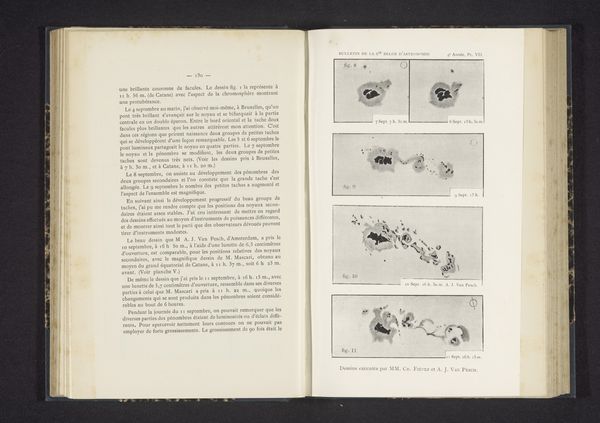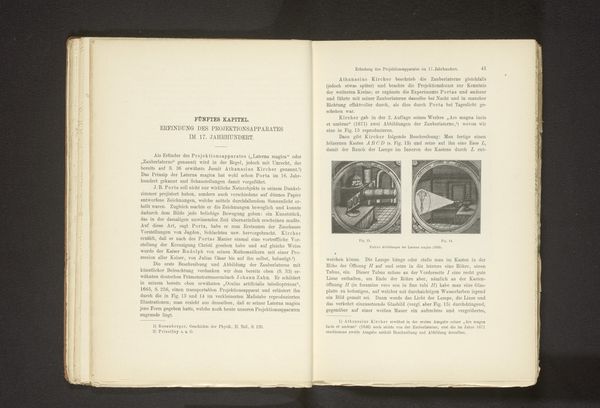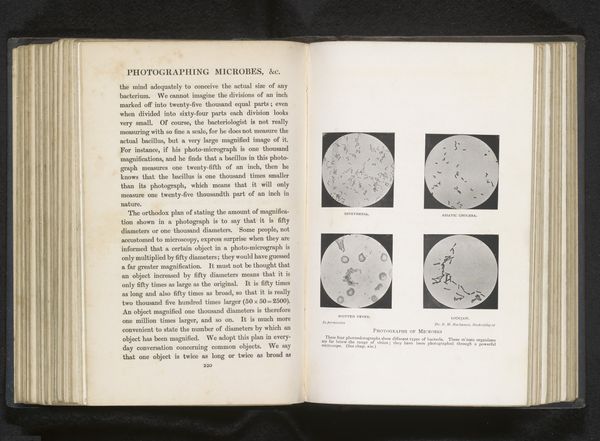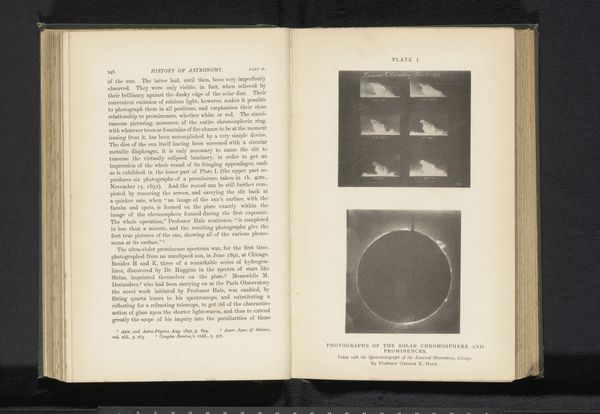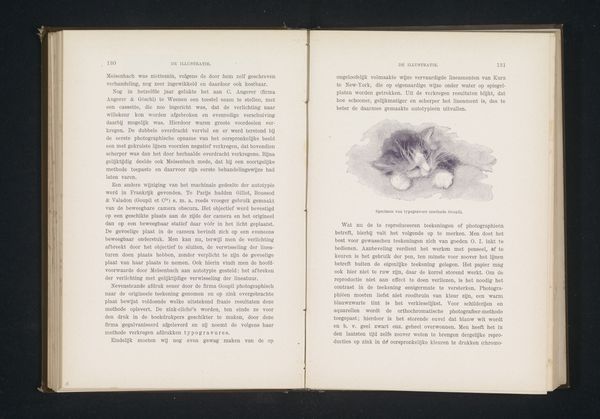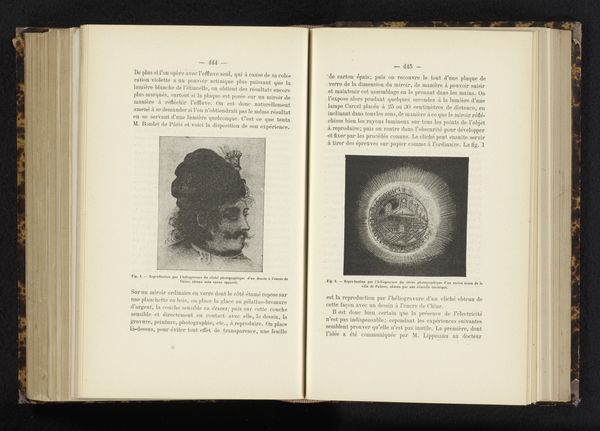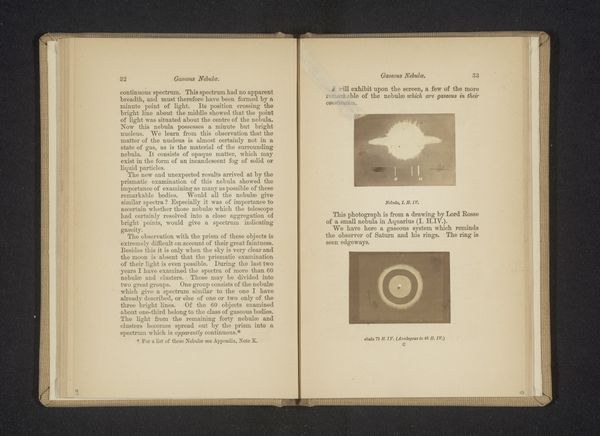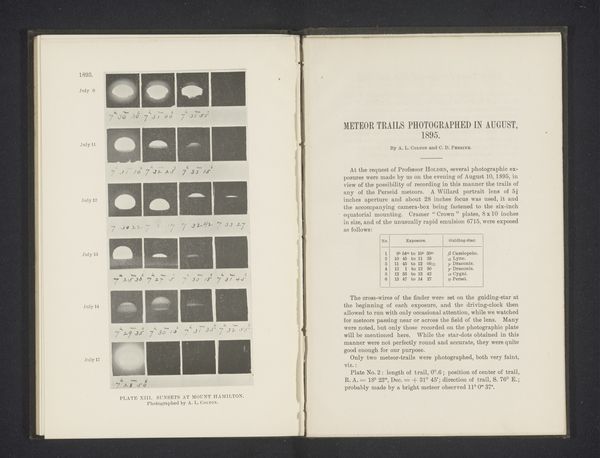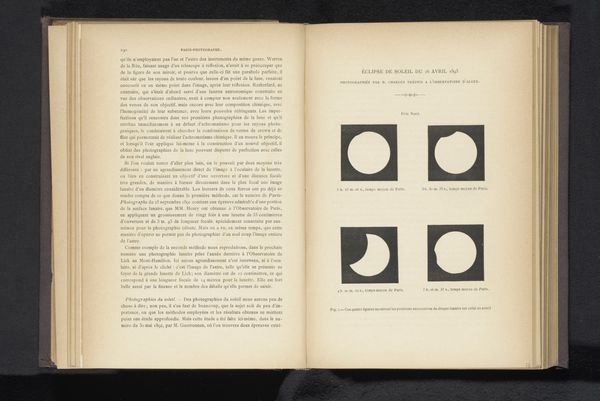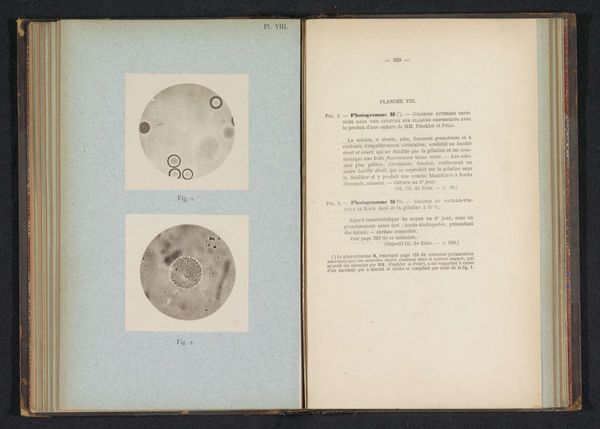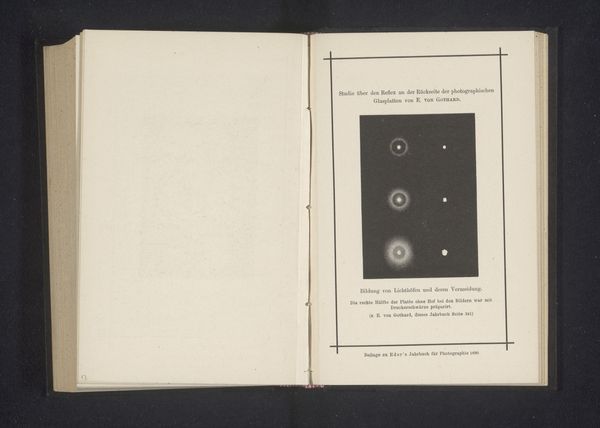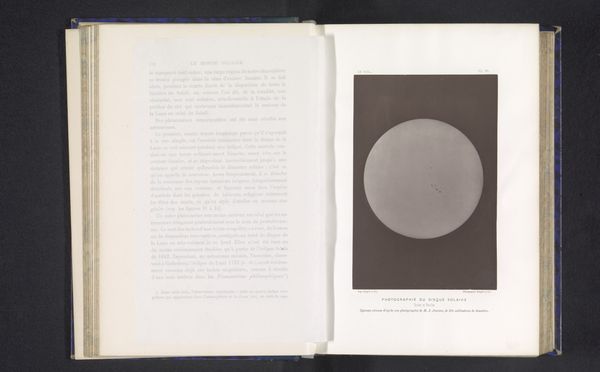
print, photography
#
still-life-photography
# print
#
photography
#
academic-art
Dimensions: height 65 mm, width 57 mm
Copyright: Rijks Museum: Open Domain
Curator: So, here we have "Vier microscopische opnamen van het menselijk oog," or "Four Microscopic Images of the Human Eye," created sometime between 1885 and 1886. What are your initial thoughts? Editor: Well, the stark black and white images against the aged book pages create such a contrast. The images feel strangely detached yet intimately connected to the viewer, since they depict part of the human body, though it’s hard to wrap my head around it being shot this way at the time. It evokes this sense of curiosity, but also perhaps unease, especially with the context of the medical research that probably surrounds it. As a collection, it’s pretty unusual, not something you would find exhibited today. How would you interpret this work within the context of late 19th-century science and art? Curator: Ah, good eye. It *is* a departure! This photograph existed at an unusual intersection of medical science, technological innovation, and even aesthetic curiosity. I find myself drawn to the relentless pursuit of knowledge it represents. Think about the scientist or doctor behind the lens; what was his motivation in capturing these images? Purely scientific? Or perhaps an awakening sense of the inherent artistry within the structures of the body? Do you imagine his astonishment seeing these forms under magnification? Editor: It’s like peering into another world. There is this scientific urge to understand that clashes with a purely visual experience, almost dreamlike and totally at odds with everyday expectations about life at the time! The fact that this exists, and exists at the end of the 19th century is very fascinating. The high-contrast imagery still carries that sense of shock after more than one hundred years! Thank you! Curator: Absolutely, and this piece truly exemplifies the poetic intersection of science and art during that era, and a reflection on how far our view of seeing inside has changed.
Comments
No comments
Be the first to comment and join the conversation on the ultimate creative platform.
